The average lifetime value of an individual healthcare consumer is $1.4 million, according to the U.S. Census Bureau. When you consider a family of four, it comes out to a value of about $4.3 million.
For anyone who works in the business of healthcare, these are astronomical amounts you can’t ignore. Yet few businesses net even a small percentage of this lifetime value. Why? Poor patient retention strategies, which lead to patient leakage.
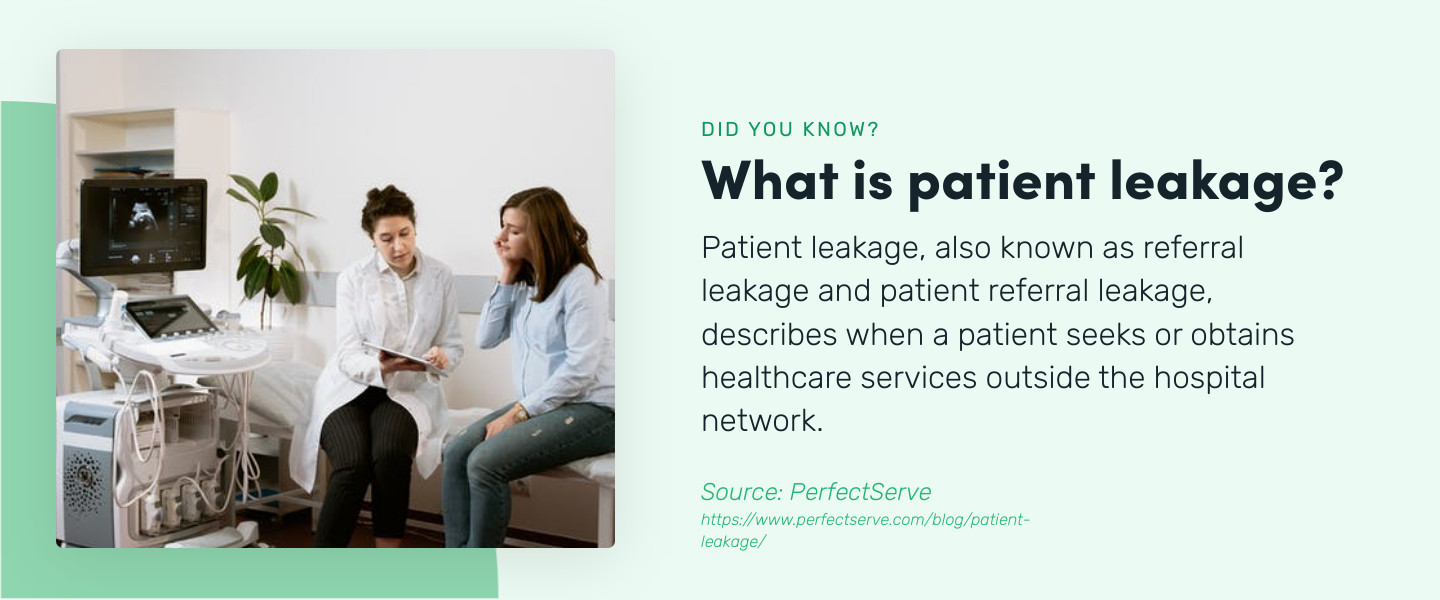
In fact, a Fibroblast survey found that over 40% of healthcare executives say they’re losing 10% or more of annual revenues to leakage, and 19% are losing over 20%.
How can healthcare organizations combat this leakage and improve patient retention and loyalty? Digitization may be the answer.
Why is digitization important to healthcare now?
The last five years have created rapid changes across all areas of healthcare, but few things have accelerated as quickly as the need for digital patient experiences. The pandemic ushered in new digital systems, processes, and workflows, but there’s something else driving digitization: a new population entering the healthcare system.
According to Brookings, Millennials and Gen Z now outnumber Baby Boomers and older generations. This means patient populations are shifting to include more Millenial and Gen Z patients. As the first digitally native generation begins to seek services, their expectations of their healthcare org is to serve them in a digital-first manner.
That’s not to say that older generations don’t have similar wants of digital-first experiences. Expectations across all patient demographics are changing thanks to our on-demand culture. Zak Pines, VP, Partnerships at Formstack, says, “It's important to remember that the healthcare consumer is that same B2C consumer. We're all people, and the way that we interact with any brand has evolved over the past decade.”

The rapid changes in technology and patient expectations means healthcare facilities must keep up. Otherwise, they’ll continue to not only lose patients, but be unable to acquire new patients to fill the pipeline.
Is digitization the key to improving patient loyalty and retention?
To better understand how digitization can help healthcare organizations improve patient retention and loyalty, we interviewed leading experts in the field. Here are three reasons why they think digitization is a necessity for healthcare facilities.

Note: For the purpose of this article, we consider digitization to include moving processes to computer and/or internet-based systems–minimizing the need for paper, phone calls, and/or in-office interaction.
Digital Channels Improve Response Time
In our rapid-paced world, people no longer have hours to waste on hold with their doctor’s office or waiting for mailed documentation. “People want communication and care when they want it, how they want it, and where they want it,” says JoAnne King, Director of Healthcare Solutions at Coastal Cloud.
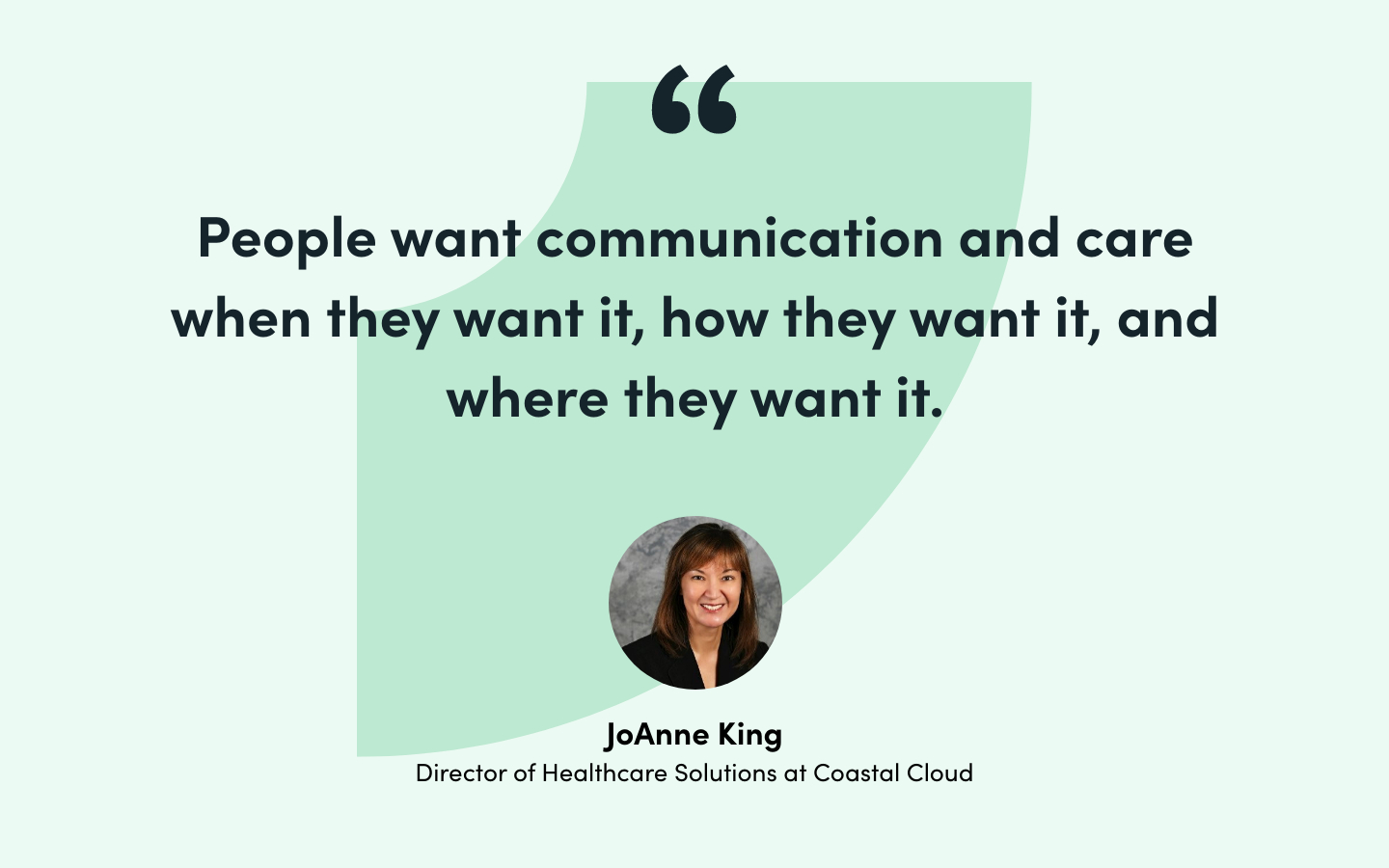
In order to provide the instant communication that has become part of our culture, healthcare facilities must adapt to the digital channels and technology that make it possible to offer it.
According to Accenture’s Digital Health Consumer Survey, more than half of patients expect digital capabilities—and these expectations increasingly influence who patients choose in a provider. For instance, 70% of patients are more likely to choose a provider that offers reminders for follow-up care via email or text.
Tools to Consider
Digitization is key to providing these quick responses patients now expect. The following digital channels can help patients receive answers quickly and help meet their expectations of a digital-first experience:
- Chat bots
- Responsive website
- Online forms
- Self-scheduling
- Mobile app
- SMS communications
- Automated emails
Adding a variety of the digital channels listed above can help improve your digital front door. Offering a variety of ways for patients to contact their care team, quickly and easily, is crucial to retaining patients over time.
Arun Budhwani, Head of Patient Experience at Cortica Care, recently touched on this during Formstack’s panel discussion Healthcare: Reimagining Your Front Door. He stated that, “patients want a frictionless experience. They want quicker access to services. They want an easy pathway to get to those services.”
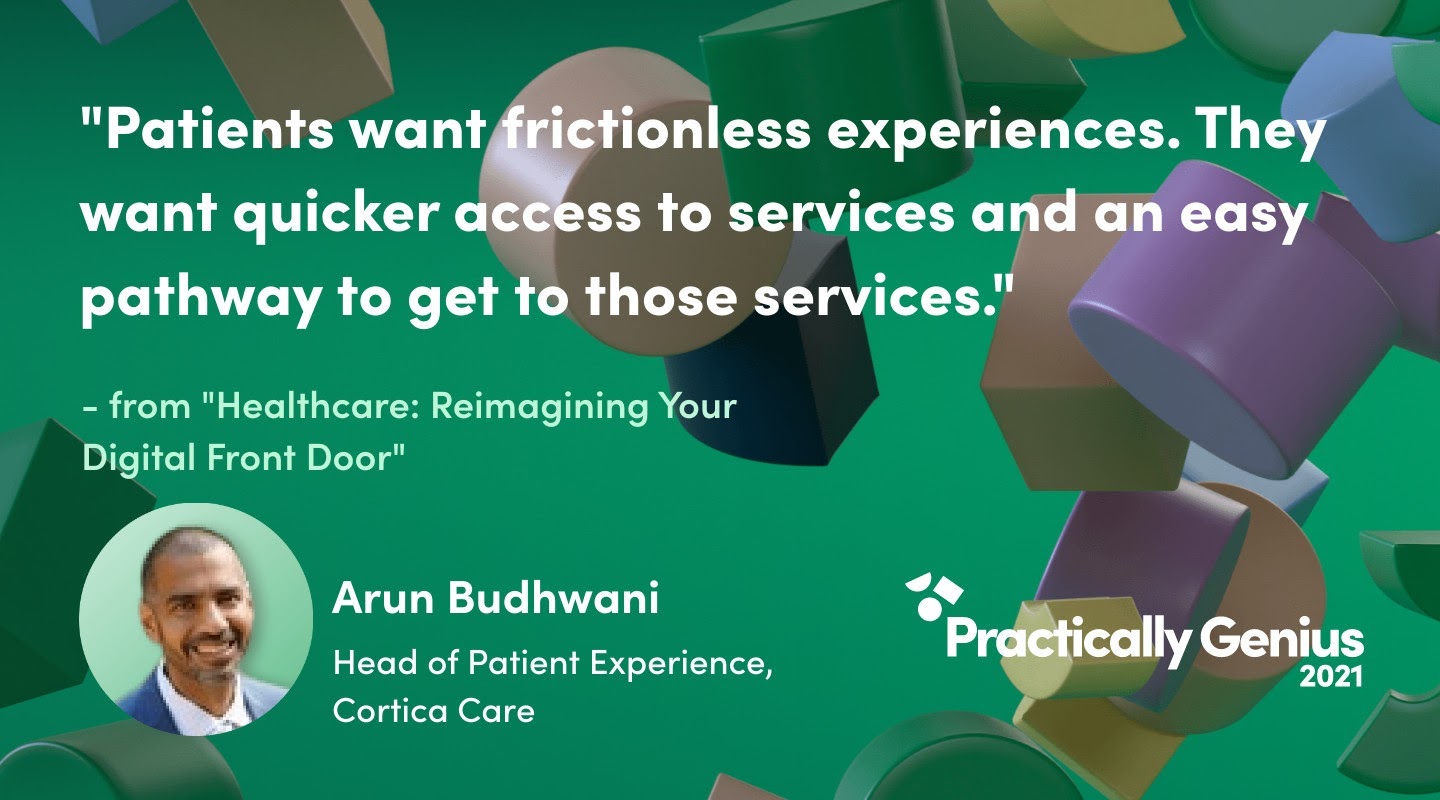
Implementing New Tools
If your organization has not implemented these types of technology, it’s important to keep a few things in mind. First, any technology that is collecting Protected Health Information (PHI) must be HIPAA compliant. Although this may limit your tech options, there are still many viable solutions that can help improve communication while maintaining HIPAA compliance.
Once you’ve identified some options to add to your tech stack, it’s smart to consider how they will integrate into your existing systems. Zak pointed out on a recent Becker’s Hospital Review podcast, “there should be constant interplay between me and my digital front door as a patient. How that data and interactions end up in an EHR or a patient system of record should be continuous and fluid.” Before you add any new technology, be sure to fully scope how it will capture, share, and store that data into your existing systems.

Patient Data Provides Better Personalization
A one-size fits-all approach to healthcare is no longer a sustainable, or successful, way to provide services. “Patients are wanting more personalization,” JoAnne states. “They want organizations to really know them.” But there are a few ways patients expect to have their healthcare journey personalized.
Patients Expect Options
JoAnne notes that healthcare organizations must begin to shift to patient-centric care in order to stay competitive. “It used to be that providers were in their office from 9 to 5, Monday through Friday, except from 12 to 2 for lunch,” says JoAnne. “But now, organizations have to modify and adapt to what patients want.”
It’s clear that patients want digital options when it comes to accessing healthcare. Patients now expect the freedom to create their own healthcare experience, including the ability to complete patient forms from the comfort of their home or mobile device to accessing healthcare virtually.
According to an original Penrod research report, patients desire more digital tools in every technology-related category they were asked about.
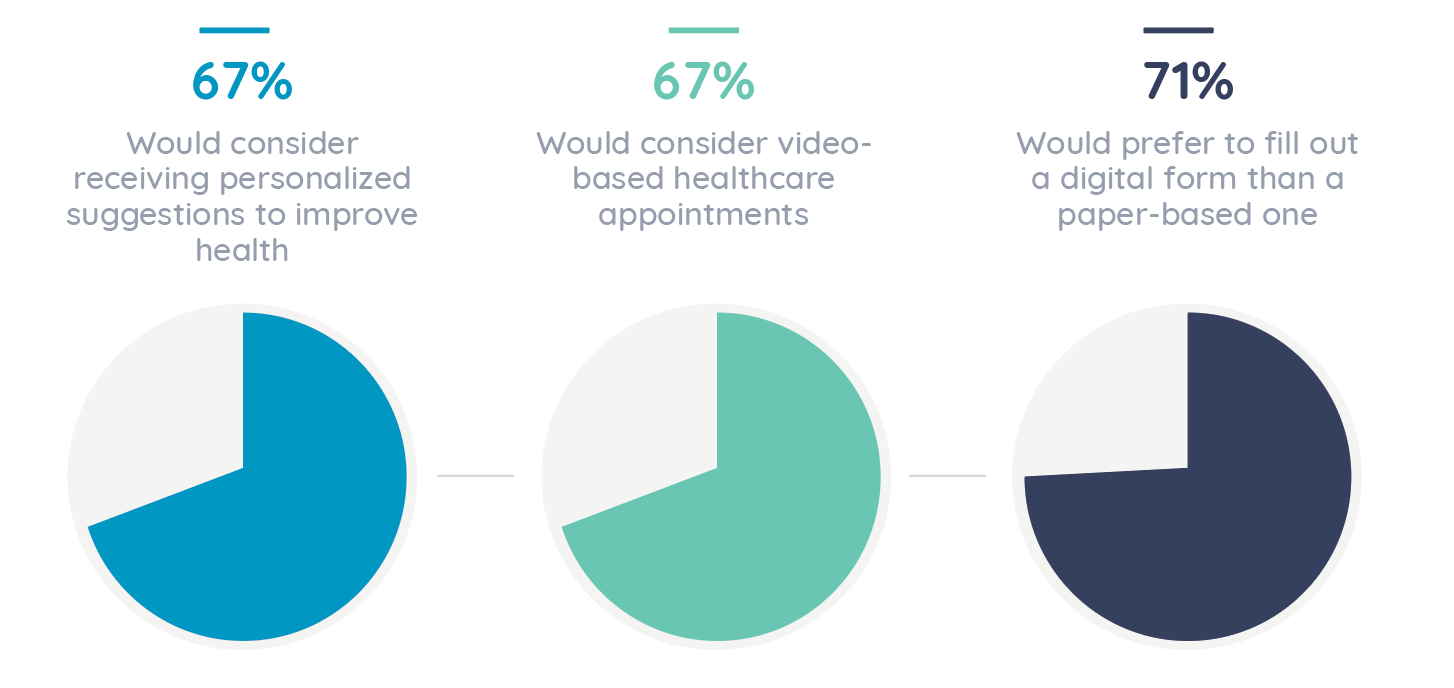
For providers, this means putting the power in the hands of the patient to curate an experience that works for them–for instance, offering in-person or virtual visits when possible. Giving patients this choice will broaden your appeal to patients, especially if you allow them to self-select their visit preference. Not all visits can offer a virtual option, but when it is possible, it needs to be offered.
Other considerations include allowing patients to opt into text messaging reminders, providing secure direct messaging with providers, and the ability to self-schedule appointments.
Patients Enjoy Customized Experiences
One huge benefit of digitization is the ability to use patient data to provide personalized experiences. A patient in their 20’s has drastically different healthcare needs than someone in their 60’s.
With the power of secure technology, healthcare providers can offer personalized care plans, communications, and experiences that are appropriate for the patient’s age, health concerns, and diagnosis.
Matt Fiel, EVP of Marketing at Penrod, compares this idea of creating customized patient experience to the likes of what companies like Amazon, Netflix, and Apple provide. “These wildly successful companies are at the forefront of utilizing technology to improve consumer experiences, tailor personalized suggestions, and influence behavior,” he says.
Using the data patients provide to craft unique, personalized experiences can help set your healthcare organization apart from the competition. Patients will feel like you know them, understand their needs, and are playing a proactive role in their healthcare.
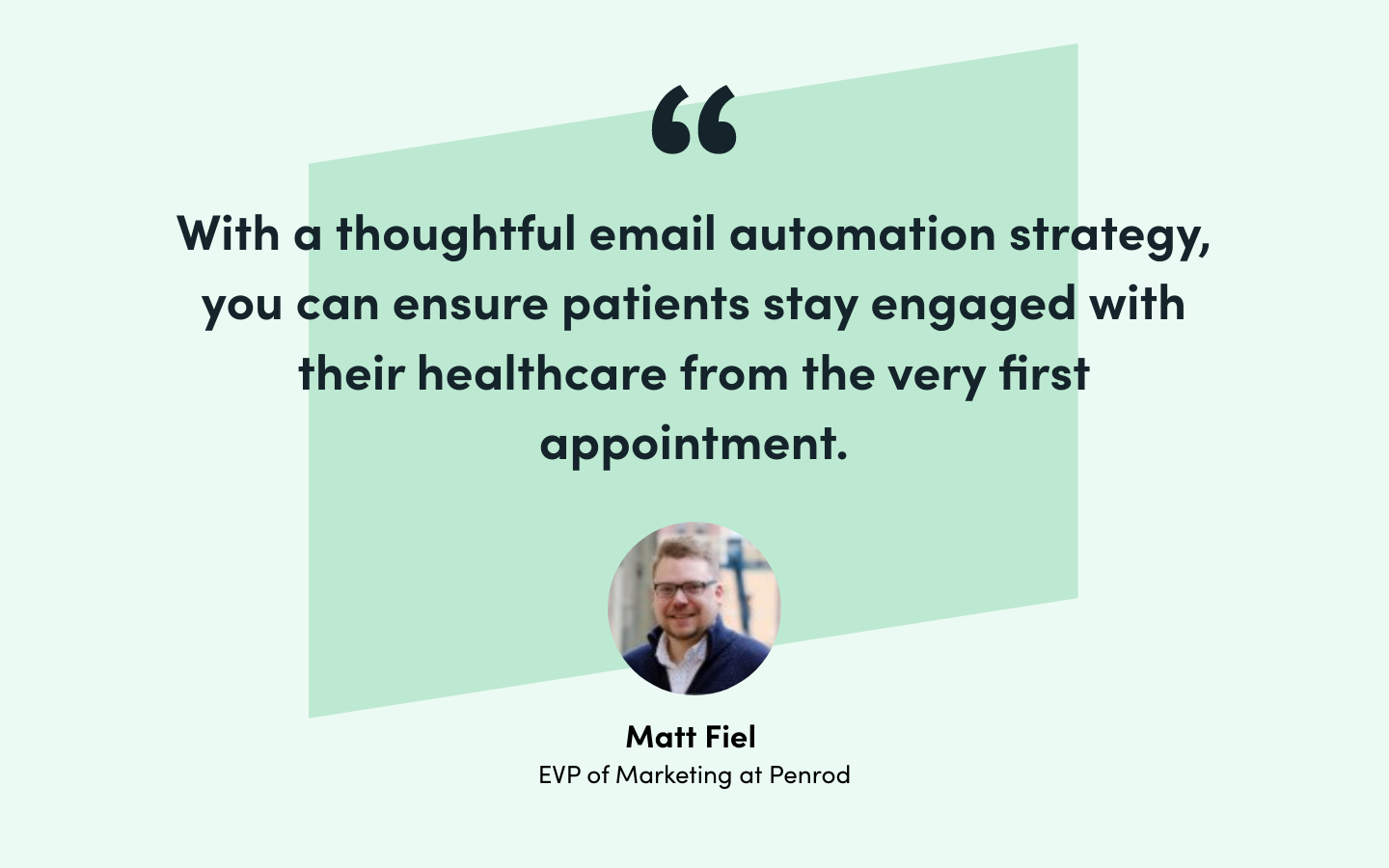
Something as simple as personalized emails can have a big impact on patient retention and loyalty. “With a thoughtful email automation strategy, you can ensure patients stay engaged with their healthcare from the very first appointment,” Matt states. Using patient data, organizations can easily customize messaging and send appropriate information, healthcare service options, and reminders as needed.
Digitization Increases Convenience
Of all the ways digitization drives patient loyalty and retention, convenience may be the most impactful. According to a recent Healthcare Consumer Trends Report, 80% of patients reported they’d switch providers for convenience factors. When it comes to patient leakage, this is a statistic no healthcare organization can ignore.
“Patients are ultimately consumers of care. As the retail channels they use, like Amazon, Netflix, and Apple, offer increasing levels of digital convenience, they expect the same level of care from their healthcare ecosystems,” says Matt. “Bad technology and poor experiences definitely lower retention.”
Convenience is a major factor when Millennials and Gen Z choose their healthcare provider. “When Millennials and younger demographics need healthcare, they're going to expect it to be super convenient and digitized,” says Jim Stalder, Chief Technical Architect at Coastal Cloud. According to Avia Health, younger patients are not as loyal to their medical provider and are more willing to shop around and change providers based on convenience, price, and digital offerings.

To stay competitive, healthcare organizations must continue expanding their digital channels and put a focus on convenience. Some ways to do this include:
- Collecting data digitally
- Offering instant messaging
- Providing telehealth options
- Digitizing documents and patient records
- Investing in self-service options
We live in an always-on and always-accessible world, which puts pressure on healthcare organizations to be available when it’s convenient for the patient. “I think expectations are the way I work with my healthcare provider or my healthcare institution are going to match the same way that I might be interacting with a brand like Amazon,” says Zak. This means providing instant access to what patients need, whether that is scheduling an appointment, receiving an answer about a medical question, or ordering necessary medical services.
Creating more convenience for patients may also result in stronger relationships between healthcare organizations and their patients. “Organizations are realizing the convenience factor is important because it not only improves the relationship between the patient and that physician, but the relationship with the practice or provider as well,” Jim shares.
When patients are put first and given the flexibility and accessibility they need, they are more likely to return to that provider for future healthcare needs. Retaining patients is crucial to the bottom line, considering it is six to seven times more costly to acquire new customers than retain existing ones.

Boost Patient Retention With Digitization
Healthcare has never been as competitive of a market as it is now. “There's a lot more choice,” JoAnne remarks. “It's not just my local doctor and my hospital system, but now I might go to Walmart or lots of other care providers out there that are getting into the space.”
Don’t let patients walk away from your organization due to a lack of convenience, slow service, or poor communication. Keep them engaged, happy, and satisfied by investing in digitization today.
We’ve only scratched the surface on how digitization can improve patient loyalty and retention. Watch the panel discussion Reimagining Your Digital Front Door now to hear how healthcare professionals are using data and technology to create exceptional patient experiences.











